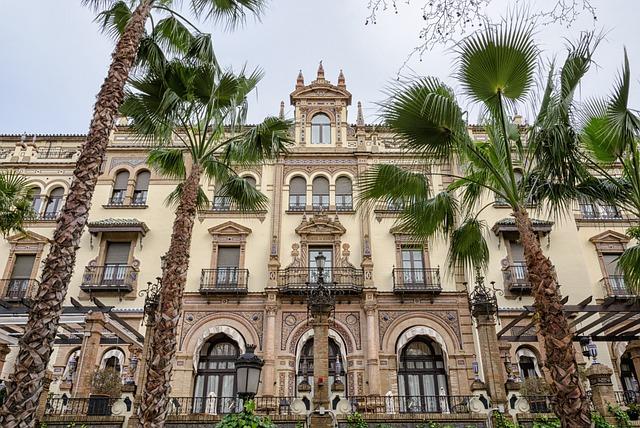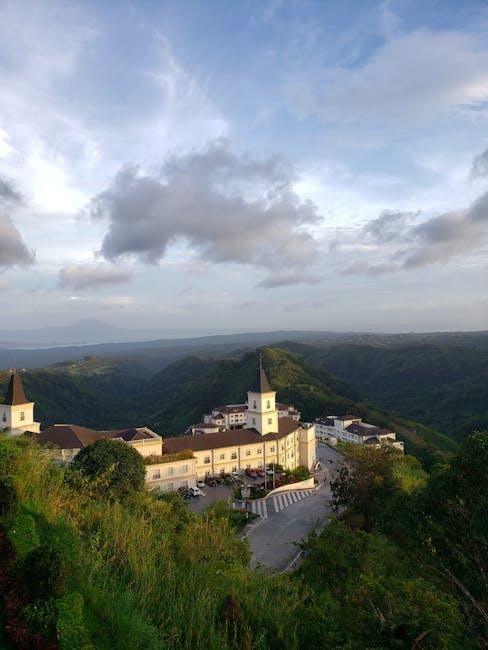In the bustling heart of Mexico City, where the echoes of everyday life intertwine with the whispers of history, Alfonso Cuarón embarked on a cinematic journey that would captivate audiences worldwide. “Roma,” a masterpiece of visual storytelling, stands as a testament to Cuarón’s unparalleled ability to weave emotion into every frame. This article delves into the mind of the visionary director, exploring how he masterfully captured the intimate yet universal tapestry of human experience. Join us as we unravel the layers of emotion and visual brilliance that make “Roma” an enduring piece of cinematic art.
Crafting Intimacy Through Cinematic Detail
Alfonso Cuarón’s “Roma” is a masterclass in how meticulous attention to detail can forge profound connections with the audience. By focusing on the subtleties of everyday life, Cuarón crafts a narrative that resonates with authenticity and emotional depth. Cinematic details are not mere embellishments; they are the fabric of the story. From the rhythmic sound of water splashing against stone floors to the intricate patterns of light and shadow in a bustling street, each element is a brushstroke in Cuarón’s visual canvas.
The film’s power lies in its ability to transform the ordinary into the extraordinary through a series of carefully curated choices:
- Visual Composition: Every frame is meticulously composed, drawing viewers into the world of the protagonist, Cleo, and inviting them to linger in the moment.
- Sound Design: The ambient sounds create an immersive experience, from the whispers of wind to the distant chatter of a city alive with stories.
- Color Palette: The monochrome aesthetic evokes a sense of nostalgia, enhancing the emotional weight of the narrative.
Through these deliberate choices, Cuarón not only tells a story but also invites viewers to feel it deeply, bridging the gap between screen and soul.

Harnessing Natural Light for Authentic Storytelling
Alfonso Cuarón’s “Roma” is a masterclass in the art of using natural light to evoke genuine emotion and visual splendor. The director’s choice to rely on ambient lighting was not just a stylistic decision but a deliberate attempt to capture the authentic essence of 1970s Mexico City. By embracing the unpredictability of natural light, Cuarón allowed scenes to unfold with a spontaneous realism, enhancing the film’s emotional depth.
- Intimacy: The soft glow of morning light illuminates personal moments, drawing viewers into the intimate world of the characters.
- Contrast: The play of light and shadow creates dramatic contrasts, emphasizing the emotional highs and lows of the narrative.
- Authenticity: By forgoing artificial lighting, the film maintains a raw and unfiltered aesthetic, making each scene feel like a captured memory.
Through this technique, Cuarón not only pays homage to the past but also invites audiences to experience the story in its most unadulterated form, allowing the natural world to speak volumes without uttering a single word.
Balancing Soundscapes with Emotional Depth
In “Roma,” Alfonso Cuarón crafts an auditory experience that mirrors the intricate layers of human emotion. The soundscapes are meticulously balanced to reflect the inner world of the characters, allowing the audience to feel the weight of their struggles and triumphs. Cuarón’s approach to sound design is not merely about creating ambient noise but rather about orchestrating a symphony that resonates with the soul.
- Subtle street sounds blend seamlessly with the whispers of personal moments, creating a tapestry that envelops the viewer.
- Natural elements, like the gentle rustling of leaves or distant thunder, amplify the emotional undertones of the narrative.
- Dialogue and silence are used strategically, each pause and word carrying profound significance.
This harmony between sound and emotion is a testament to Cuarón’s visionary storytelling. By intertwining these elements, he ensures that every scene in “Roma” not only captures visual brilliance but also evokes a deep, resonant emotional impact.

Guiding Performances to Reflect Raw Humanity
In crafting the performances for Roma, Alfonso Cuarón sought to evoke the essence of genuine human experience. His approach involved guiding actors to connect deeply with their characters, encouraging a level of vulnerability that would allow the audience to witness unfiltered emotion. This method required a unique combination of trust and spontaneity, where actors were often unaware of the next scene’s direction, fostering a sense of authenticity in their reactions.
- Spontaneity: Actors were often given scenes without prior knowledge, capturing genuine responses.
- Trust Building: Cuarón developed a strong rapport with the cast, creating a safe space for emotional expression.
- Emotional Depth: Encouraged actors to draw from personal experiences to enhance their performances.
This innovative approach not only captured the rawness of everyday life but also ensured that each performance resonated with emotional truth. By allowing the narrative to unfold organically, Cuarón transformed the film into a tapestry of lived experiences, rich with the subtle nuances of human emotion.

